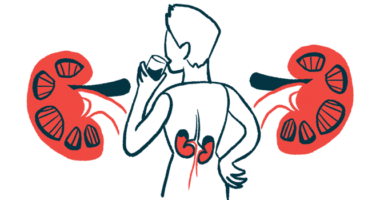Anti-CFH antibodies common cause of aHUS in India, study says
Retrospective analysis shows less likelihood of having end-stage kidney disease

More than half of people with atypical hemolytic uremic syndrome (aHUS) in India have self-reactive antibodies targeting complement factor H (CFH), a protein that regulates the activity of the complement system, according to a recent study.
These patients generally had better outcomes, being less likely to develop end-stage kidney disease requiring dialysis than those without anti-CFH antibodies.
“Anti-CFH antibodies remain a major cause of aHUS and is associated with better kidney outcomes than negative patients,” the researchers wrote.
The study, “Long-Term Outcomes of Anticomplement Factor H Antibody Positive Versus Negative Atypical Hemolytic Uremic Syndrome,” was published in the Indian Journal of Nephrology.
aHUS is caused by the excessive activation of the complement cascade — a group of immunological proteins that normally help fight off infections — leading to the formation of blood clots in small blood vessels that can damage organs, particularly the kidneys. In some cases, excessive complement activity is brought on by self-reactive antibodies targeting proteins that regulate complement activation, such as CFH.
“Studies from Indian population revealed more than 50% of aHUS occurs because of anti-factor H antibodies, and plasmapheresis with immunosuppressive therapy may improve the outcomes of the patients,” the researchers wrote, while noting that the use of immunosuppressants is variable “and the long-term outcome data of the treatment are not available.”
The study and its findings
To learn more about treatment outcomes and long-term implications of aHUS in a resource-limited setting, researchers in India conducted a retrospective analysis of clinical data from people with aHUS who had been admitted to their institute between 2016 and 2022.
A total of 57 patients, with a mean age of 12.5 years and mainly male (63.1%), were followed for a median of 24 months, or two years.
Most participants (73.6%) experienced prodromal symptoms, or early symptoms that may indicate the onset of the disease before more characteristic symptoms appear, particularly fever (42.1%) and acute gastroenteritis (15.7%).
At presentation, all participants had high blood pressure, and the majority had low or no urine production (82.4%) or blood in the urine (94.7%). About one-third experienced seizures (36.8%), while 26.3% had jaundice (yellowing of the skin) and 10.5% had a rash.
They also had low levels of hemoglobin — the protein that carries oxygen in red blood cells — and elevated levels of lactate dehydrogenase, a marker of red blood cell destruction. Their platelet counts were also low, whereas the levels of creatinine, a marker of kidney dysfunction, were high.
More than half of the patients (57.9%) tested positive for anti-CFH antibodies.
Initial disease remission after treatment was achieved by 42 patients (73.6%), including 50.9% who attained complete remission (complete normalization of kidney function) and 22.8% who attained partial remission (significant improvement in kidney function). The remaining 15 patients (26.3%) did not respond to treatment. Treatments used by both responder and nonresponder groups included plasma exchange, corticosteroids, and immunosuppressant therapies.
When comparing the two groups, researchers found that nonresponders were significantly older (18.1 vs. 10.5 years), less likely to be male (33.3% vs. 73.8%), and more likely to experience seizures (42.9% vs. 28.6%). On the contrary, responders more frequently had elevated levels of liver enzymes (85.7% vs. 53.3%), tested positive for anti-CFH antibodies (66.7% vs. 33.3%), and had lower mean levels of these self-reactive antibodies (3,455 vs. 7,557 arbitrary units per milliliter (AU/mL)).
Further analysis indicated that participants who were 16 years or older, female, had seizures, and had anti-CFH levels equal to or above 4,000 AU/mL, were more likely to not respond to treatment.
Overall, 12 patients died (21%), two during admission from brain hemorrhage, and 10 during follow-up — six nonresponders and four responders, usually from infections and worsening kidney function. The median survival time was 64.9 months (over five years) and was longer among responders (75.7 vs. 31.7 months).
When comparing participants with or without anti-CFH antibodies, they found that those with antibodies were less likely to develop end-stage kidney disease (18.2% vs. 41.7%). A higher percentage of antibody-positive patients remained free of dialysis at two years of follow-up compared with antibody-negative patients (81.2% vs. 55.9%). However, there were no differences between the groups regarding overall survival.
“Anti-CFH antibodies remain a major cause of aHUS in our cohort. Anti-CFH-associated aHUS has better renal outcomes than negative patients,” the researchers wrote.







